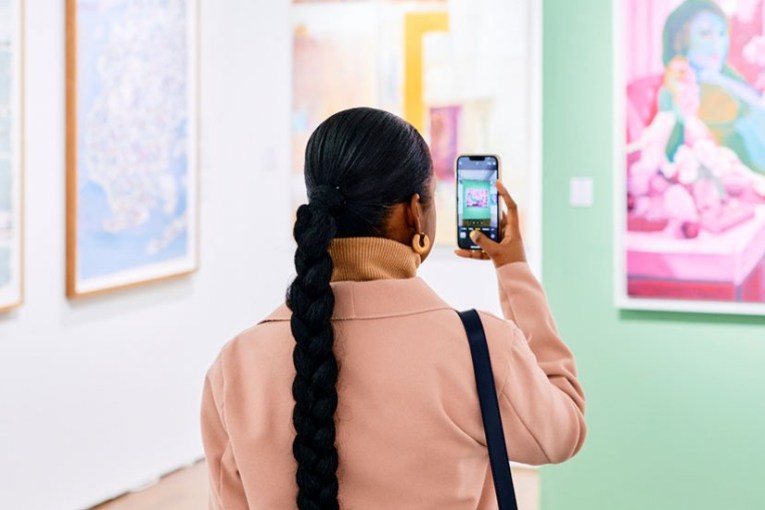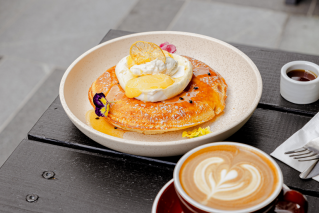Is vinyl our last link to a romantic past, or will music simply vanish into thin air?
The recent revelation that bricks and mortar outlets of the Sanity music chain will soon disappear is more evidence that we’re losing touch with the vestiges of our past, writes Shane Rodgers.


Beatles Paul McCartney (left) and John Lennon, whose music made it from vinyl to thin air, and all the way back again. (image: Theconversation)
Some years ago, while enduring the long drive between Brisbane and Canberra, I stumbled across an interview with former Beatle Paul McCartney playing on a rural radio station.
The interview went on for a couple of hours and McCartney talked extensively about growing up in Liverpool and the things that were important to him as a child.
In particular, he loved to buy vinyl records. They were something of a luxury and, when he saved enough money to purchase one, he would take the bus into town to collect his hard-earned treasure.
In the interview he talked glowingly about using the bus ride back to read every word on the record sleeve, look at the detail of every picture and generally breathe in the wonder of a freshly minted album with the promise of new and marvellous music.
This childhood memory was largely behind the effort that went into the covers of Beatles albums, particularly the human tapestry of the famous Sgt. Pepper’s Lonely Hearts Club Band cover.
This story came back to me last week when I read that Australian music and movie retailer Sanity had announced it would close its 40-odd remaining physical stores in April. It blamed “diminishing physical content” for the decision.
The loss of Sanity stores is significant. It confirms that, despite the recent revival of vinyl records, the ongoing decline of tangible, fully packaged, physical albums is continuing. When you look at the most recent Australian Recording Industry Association statistics, the trends are clear. In 2021, 90 per cent of all music sales were digital (as distinct from physical product) and digital sales grew from $368.1 million to $509.7 million over four years.
In contrast, the number of physical CDs sold fell from 8.3 million to 2.3 million over the same period. Around 998,000 vinyl albums were sold in 2021, up from 819,500 in 2017.
In some respects, the decline of physical music is inevitable and certainly from a planet preservation perspective, replacing tangible things with virtual alternatives reduces our footprint and the accumulation of stuff.
However, on some levels, it also reinforces how quickly human experience is evolving from the tactile to the virtual.
Everything from friendships, socialisation, banking and money, shopping, community connections, reading and researching to our visual history, corporate systems and media has ascended “into the cloud”.
Human life has been largely digitalised and uploaded.
In the movie Transcendence Johnny Depp’s brain is uploaded into the internet and he continues to exist even beyond life. While this may be a little extreme, it would not be hard to imagine a future in which humans have a very small physical footprint, but every aspect of their lives is perpetuated in a virtual file.
When you look at some of the big questions facing the human race, the nature of how much of our tactile existence we wish to preserve is an under-debated topic.
Many of us grew up with bookshelves, records and CD racks, memorabilia and framed photographs sitting around us as extensions of ourselves and statements about the parts of the world that defined us.
All of this can now easily be imprisoned inside our tiny phones, that all look the same.
For everything we gain in the passage of time, there is usually something we lose. That is normal and holding on to the past seldom ends well.
However, in all this the really big question is: Why have vinyl records made a comeback? They are old-world technology, and their resurgence seems to make little logical sense. Yet for the first time in decades, the sales value of vinyl has surpassed CDs.
And, even stranger, the research seems to suggest millennials are behind much of the growth.
Plenty of reasons are proffered – warmer sound, better packaging, an old-world, raw romanticism in a world of homogeny. New York journalist Steven John eloquently put it down to vinyl music being “the activity, not the backdrop”.
Personally, like McCartney and a new generation of millennium album lovers, I enjoy the experience of reading the liner notes on a CD or vinyl album and I love their covers as an artform.
That crackle as the needle first hits the vinyl relaxes me and the swirling of the record feels like a journey that you can take at any time with an artist somewhere in the world, at some moment in the past.
The impurity of it somehow makes it more real. More special. More emotional.
I am all for progress. But it’s nice when time leaves a little something behind for us to savour.
Shane Rodgers is a business executive, writer, strategist and marketer with a deep interest in what makes people tick and the drivers of change. Comments in this article are personal and not related to my day job.












